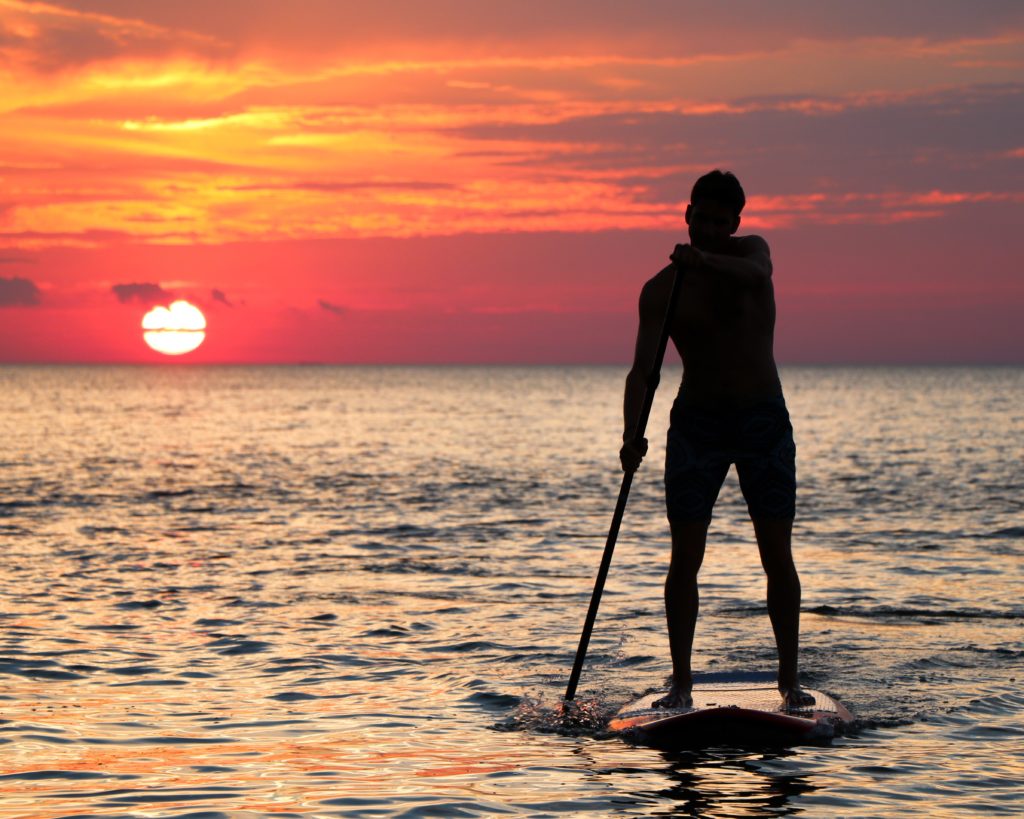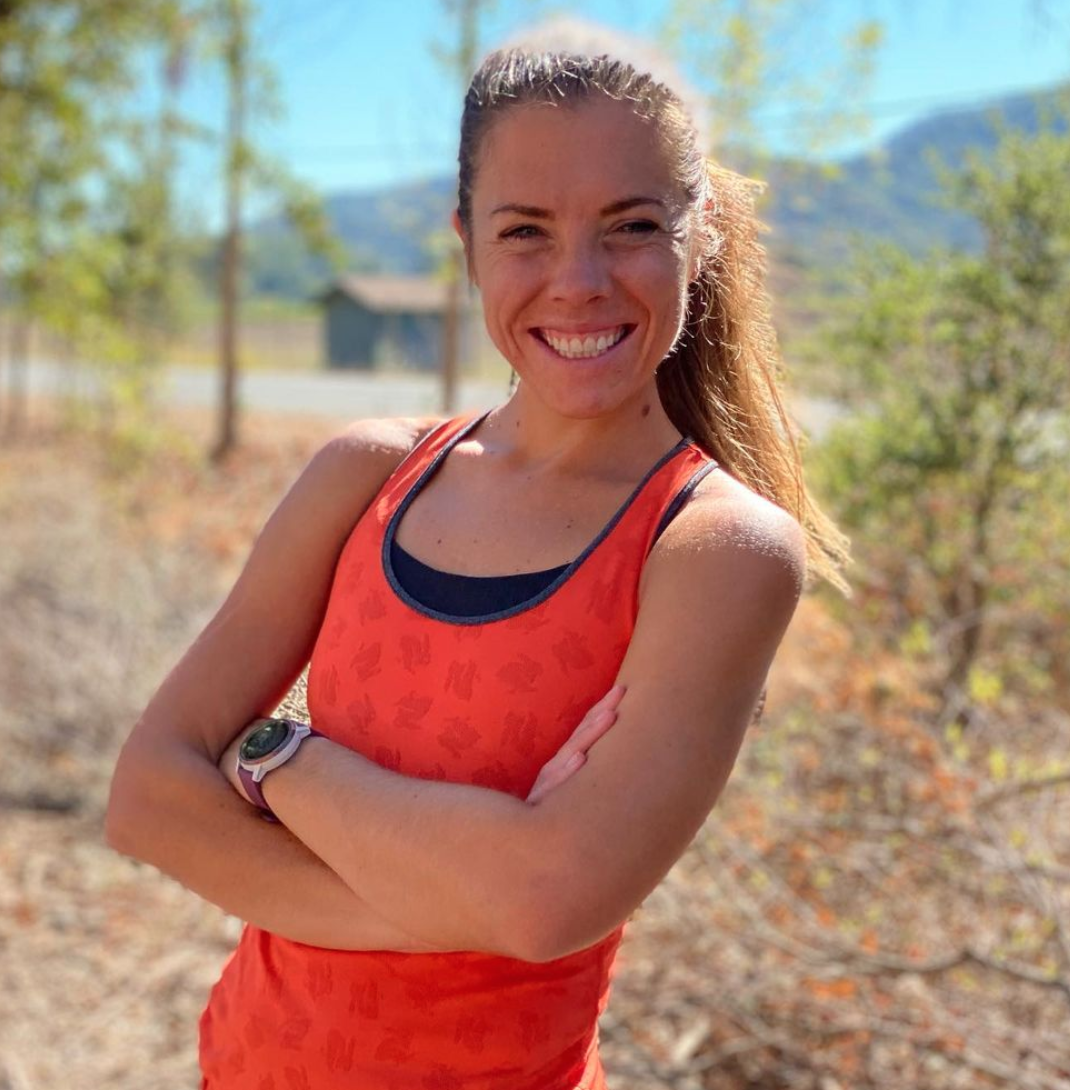Cross-Training With SUP

As runners, we know that cross-training can be beneficial. It helps us keep things interesting and fun. There are so many cross-training options these days. Most runners know about the benefits of hiking or swimming, but there are so many other activities! How about cross-training with SUP or stand-up paddle-boarding?
This newer cross-training activity is becoming increasingly popular in the summer months. It is now so popular that many GPS watches have a “SUP mode.” The Strava app even has a SUP activity you can log.
A new bonus is that there are now events called Run/SUP, which combines the two in much the same as a triathlon combines three activities. But in a Run/SUP, it’s just running and SUP.
One of the beauties of runSUP events is that there is no standard distance. There are races that are a 1 mile run and a 1 mile SUP. This distance can take anywhere from 17 minutes to 35 or 40 minutes, the same amount of time for a 5k. Other events can be a 9k trail run with a .75 mi paddle start to the trail and a .75 mi paddle to the finish. According to Tom Losee, founder of runSUP, the athletes that finish the event are typically beginners in endurance sports and ‘there sense of accomplishment is unmatched.’
Who knows, you just might find that you want to train for such a completely new event.
What is SUP?
SUP stands for stand-up paddle boarding. Paddle boarding can give you a great upper body workout, which translates into improved running form and hopefully decreased injuries.
How does cross-training with SUP impact running?
The core and back muscles play an important role in injury prevention and treatment. The more strength you have in your core the better. Why? You get a more even dispersion of shock while running. Imbalances in the core can lead you to fatigue faster, decrease your endurance and make you more susceptible to injuries.
ADVERTISEMENT

How else can SUP improve performance?
Balance:
Stand-up paddle boarding requires a lot of balance. Doing it over time can help improve your balance even when you’re not on your board. Even if you are a beginning paddler, SUP can benefit both your muscle strength and balance.
Muscle Strength:
There are 11 muscles paddle boarding works:
- Lungs (diaphragm)
- Heart
- Quadriceps
- Hamstring
- Rhomboid
- Lats
- Traps
- Triceps
- Biceps
- Rotator cuffs
- Abs
Low Impact Cardio:
Stand-up paddle boarding is a cardio workout that doesn’t stress your legs as much as running. As the opposite of running, a paddle barding workout is going to focus mostly on working your arms.
How can you get the most out of SUP?
SUP strengthens your core and back muscles. Strengthening these areas will help prevent injuries from overuse. When done correctly, SUP activates otherwise neglected muscles that are important to injury prevention. Traditional gym workouts, such as the bike or elliptical, will work the same “plane” of major muscle groups as running, but by working other planes in paddle boarding workouts, you can help prevent injuries.
Another big benefit is that SUP breaks up the boredom. You aren’t just in the gym, running on the treadmill using one of the bike machines. You have an entirely new set of scenery in the water. Many runners find they “hate the gym,” so being able to workout outside in nature is a huge plus!
How can you start stand-up paddle boarding?
Just looking at a paddle board can be intimidating. It’s a giant board, so how does one even start? The easiest way to get started is to sign up for a class. SUP classes will usually provide all of the necessary gear you need, which essentially consists of just the board and paddles.
What do you need to know before you begin SUP?
- Get the appropriate equipment: If you’re not taking a class, you’ll need to find a beginner SUP board and paddles. Consider getting an inflatable board, as they are easier to transport and store.
- Stay safe: As a beginner, you’ll probably spend more time in the water than on your board. Falls happen! Make sure you are comfortable in the water, and wear a floatation device.
- Learn in the kneeling position first: Get on your SUP board and stay in the kneeling position. You don’t need to stand immediately. Kneeling makes it easier to stay balanced and get you used to your board.
- Practice paddling: Practice in the kneeling position. Make sure you are comfortable, feel balanced, and moving before getting into the standing position. This may take a few sessions, and that’s ok.
- When you’re comfortable, try standing: Standing is probably the most challenging thing about SUP. You will likely fall many times. How do you stand? While kneeling, move slowly into a forward lunge and push your body up until you’re standing. Make sure your body weight is at the center of the board, or you’ll fall.
- Get up: Learning to paddleboard is not easy, and you will likely fall a few times. That’s ok. Don’t be embarrassed. Simply, just get up after you fall and try again.
So if you are looking for a new cross training activity and a way to enjoy nature and get a great cardio and strength workout, consider cross-training with SUP.
ADVERTISEMENT

Hollie is a runner, hiker, swimmer, residing in California. She has worked in run specialty for nearly 8 years and has fit hundreds of people for shoes. Outside of the running world, she enjoys the general aviation world, her two cats, and spending time with her spouse.








